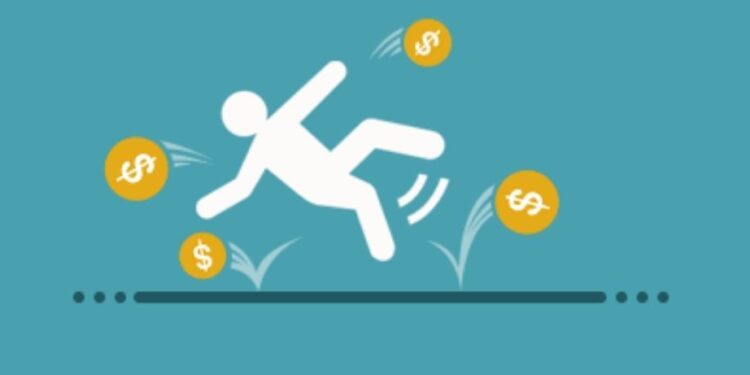Advertisement
Slippage is a common phenomenon in financial markets including forex, stocks, futures, and cryptocurrencies. Slippage greatly affects investors’ profits, especially on decentralized exchanges like Uniswap due to price volatility.
In the article below, Ecoinomic.io will provide the most basic, easy-to-understand information about slippage and how to limit slippage when trading cryptocurrencies.
What is slippage?
Slippage is the difference between the expected price and the execution price of a trade.
Slippage occurs when the bid/asks spread changes abruptly between when a market order is requested and when another exchange or market Maker executes an order.

When placing a buy or sell order on an exchange, crypto traders expect the order to be executed at the exact price set. However, due to price fluctuations between the moment the order enters the market and the trade is completed, they must buy or sell at a higher or lower price than intended.
For example, a trader places an order to buy 100 XYZ coins for $50. However, by the time the transaction is made, the price has risen to $51. The trader experiences a slippage of $1.
The price of an asset may fluctuate frequently depending on trading volume and activity.
Slippage classification
Slippage significantly affects trading and investment strategies depending on the different types of slippage: positive or negative.
For buy orders:
- Positive slippage: the actual price is lower than the expected price which gives the trader a better buy rate than originally intended.
- Negative slippage: the actual price is higher than the expected price, causing the trader to suffer an unfavorable buying rate.
For sell orders:
- Positive slippage: the actual price is higher than expected, and traders get a greater profit.
- Negative slippage: the actual price is lower than expected, and investors suffer losses.
>>> Related: Guide to sign up for Binance account update 2022
Causes of slippage
Slippage usually occurs due to market volatility or low liquidity.

Market volatility
When the market is highly volatile, the price changes so quickly that the order execution price changes significantly from the time of entry.
Low liquidity
Some cryptocurrencies lack liquidity. They are less popular in the market and not traded very often. The number of ask prices is small while the number of buyers is low, and the difference between the lowest bid price and the highest ask price is huge, causing sudden changes in price.
Front Running Bot
Front Running bot refers that bots pre-place a transaction in a queue when they know in advance how that transaction will affect future prices, so they can profit from slippage.
- Front-running bots find out a transaction with large enough slippage, a great impact on price fluctuation to receive a profit.
- Pay a large gas fee to place a buy order before a user’s order on the same block with a reasonable volume
- Sell as soon as the user order is executed. Bots profit from other traders’ slippage, facilitating buying at low prices and selling at high prices.
How to calculate slippage
Slippage is an important factor to consider when trading which has a significant impact on trading results. Traders need to find ways to minimize slippage and calculate the level of slippage before starting trading.
The level of slippage can be expressed in two ways: as a percentage and in a dollar amount.
The slippage amount is calculated as the actual price minus the expected price. However, almost trading platforms denote slippage as a percentage.
% slippage = $ of slippage / (LP – EP) * 100
EP is the expected price. LP is limited price.
How to minimize slippage when trading
In a volatile market like cryptocurrency, it is difficult for investors to avoid slippage when the price of coins/tokens changes rapidly. However, they may apply certain methods to minimize slippage losses.
Avoid trading during periods of market volatility
The market tends to fluctuate sharply in the face of important events and announcements, affecting prices and causing slippage. For example. Fed’s interest rate adjustment policies strongly affect the value of assets in the investment market. Besides, the announcement of project upgrades such as The Merge, Bitcoin Cash or the Cardano hard fork greatly affects the coin/token price.
Investors should spend more time researching and analyzing before making trading decisions during these times.
Invest in popular assets with high liquidity
One of the methods of minimizing slippage risk is to invest in popular assets with high liquidity such as EUR/USD or USD/JPY instead of uncommon pairs such as TRY/ZAR.
Use higher gas fees
The longer the validation speed and the longer the transaction processing time, the stronger the price volatility, leading to increased slippage risk. When using higher gas fees, your transactions will be executed immediately, limiting slippage. However, the drawback of this method is the high transaction fee, so investors need to consider and adjust the fee in accordance with the trading volume and expected profit.
Make transactions on layer 2 solutions
Layer 2 scaling solutions help you minimize gas fees but still allow making transactions quickly that control slippage easily.
Divide large purchases into small parts
When slippage occurs, investors can deal with losses when trading in large volumes and scales. The slippage spread when trading 1 BTC against 100 BTC can be up to 10%.
Traders can break down the number of purchases into multiple smaller transactions. However, when making multiple transactions, they will incur larger gas fees. Therefore, traders need to carefully consider allocating and optimizing trading efficiency.
Adjust slippage tolerances
Cryptocurrency trading platforms often give you the option to adjust the percentage of the order’s trading value as an acceptable slippage cost. This percentage is called your slippage tolerance. The transaction will not be executed if the value of the actual transaction exceeds your ability to withstand slippage.
Slippage tolerance is the price spread between the price at the time of confirmation and the actual price of the transaction that the investor is willing to accept when using swaps. The tolerance of the slippage is expressed as a percentage of the total swap value.
In case of volatile markets or low liquidity pools, investors can complete transactions faster and avoid losses by accepting slippage rates and higher slippage tolerance.
For example, if the investor chooses a tolerance of 5%, this means that they accept a total amount that fluctuates between more than 5% or less than 5% of the initial amount displayed on the trading platform.
Conclusion
Slippage is a common phenomenon that frequently occurs when trading cryptocurrencies. Therefore, traders need to have a good knowledge of slippage to minimize losses and implement effective investment strategies.
















